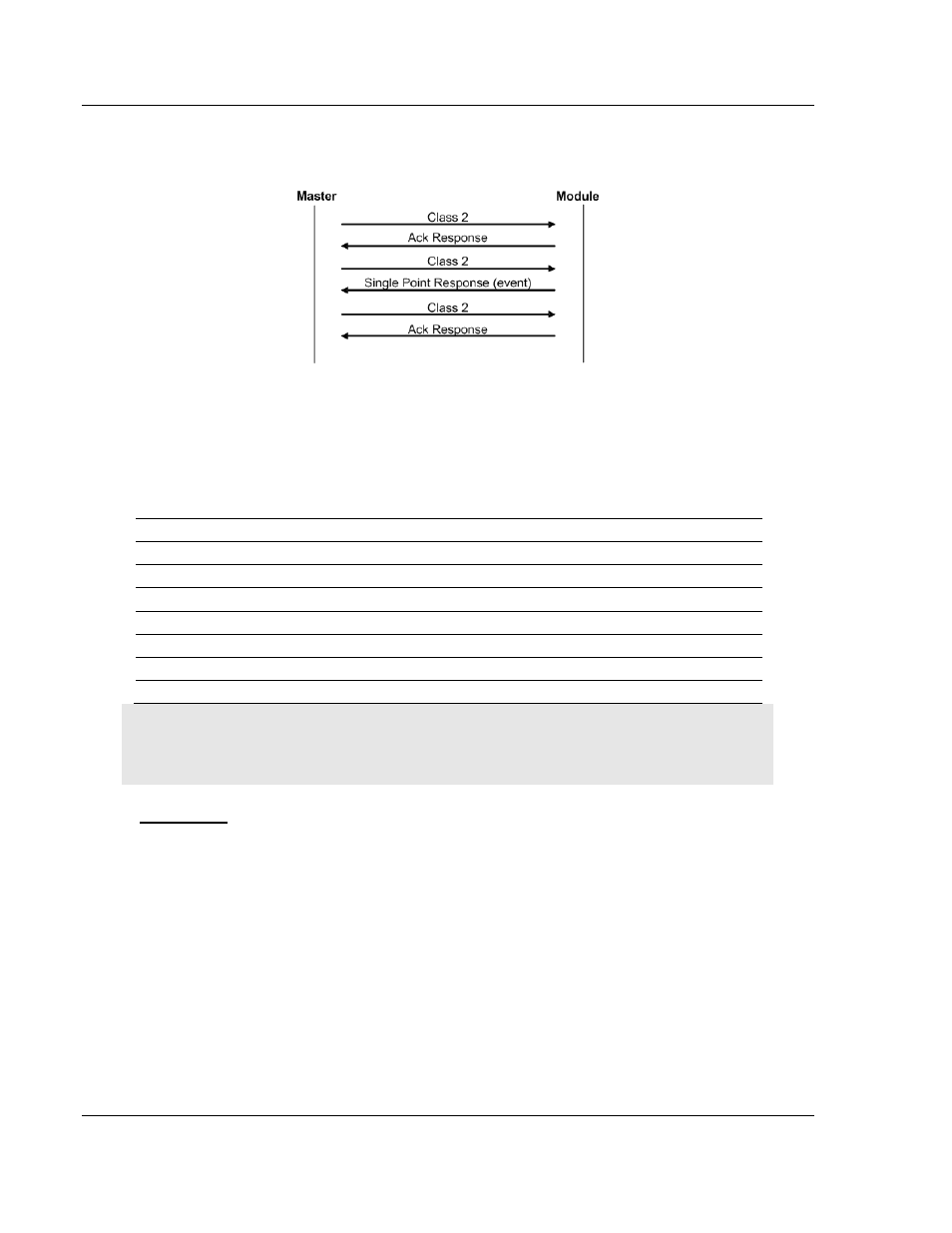Deadbands – ProSoft Technology MVI69-101S User Manual
Page 112

MVI69-101S ♦ CompactLogix or MicroLogix Platform
Reference
IEC 60870-5-101 Slave Communication Module
Page 112 of 149
ProSoft Technology, Inc.
March 16, 2009
The following illustration shows the event communication between the master
and the module during unbalanced mode:
The module can queue up to 99 events per data type. When the queue is full, the
oldest event will be deleted each time a new event is added to the queue. You
must configure the master to poll the event queue frequently enough to avoid
losing events.
The events can be returned for Class 1 or Class 2 requests according to the data
type as follows:
Data Type
Class Request
M_SP_NA Class
1
M_DP_NA Class
1
M_ST_NA Class
1
M_ME_NA Class
2
M_ME_NB Class
2
M_ME_NC Class
2
M_IT_NA Class
1
Note: In response to a Class 2 poll the module may respond with Class 1 data when there is no
Class 2 data available. So eventually the events for M_SP_NA, M_DP_NA and M_ST_NA points
may also be sent during a Class 2 response.
Deadbands
A deadband is a range of values within which the module will avoid generating
events. The monitored measured points (M_ME_NA and M_ME_NB) will only
generate events if the measurement varies by more than the configured
deadband value.
For example, if the following point is configured:
# Default
# Point # DB Address Group(s) Deadband IV DB Bit
# ------- ---------- -------- -------- ---------
START
500 105 80000000 100 0
END
